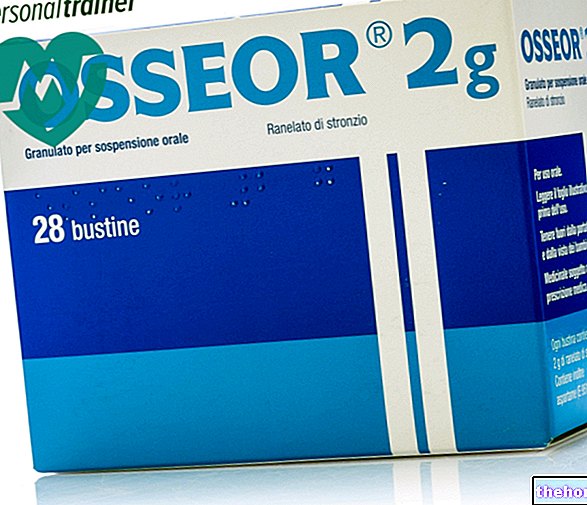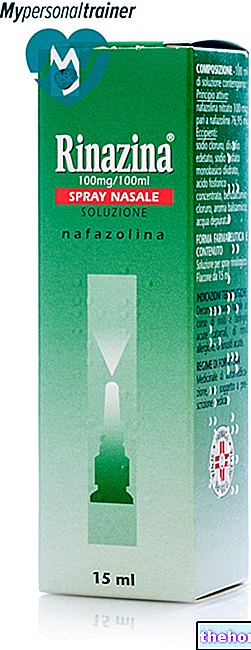Active ingredients: Mometasone (Mometasone furoate)
Elocon 0.1% cream
Elocon 0.1% ointment
Elocon package inserts are available for pack sizes: - Elocon 0.1% cream, Elocon 0.1% ointment
- Elocon 0.1% cutaneous solution
Indications Why is Elocon used? What is it for?
Elocon contains mometasone furoate, which belongs to a class of medicines called corticosteroids.
Corticosteroids are hormones that perform numerous activities, with an important function in controlling inflammation.
Elocon is indicated for the treatment of the following skin diseases (dermatoses), which respond to corticosteroid therapy in adults and children:
- Psoriasis, characterized by red patches, thickening, silvery-white flaking and sometimes itching
- Atopic dermatitis, characterized by itching, redness, peeling and lumps of the skin;
- Contact dermatitis, characterized by redness, peeling, small blisters, blisters, small superficial wounds and scabs that occur when you come into contact with certain substances;
- Seborrheic dermatitis, a skin rash affecting areas rich in sebaceous glands such as the scalp, face, chest and ears
- Irritative dermatitis, characterized by blisters, peeling, crusting, itching and thickening of the skin;
- Neurodermatitis, characterized by itching and peeling;
- Stasis eczema, characterized by darker areas, with red, thin, sometimes thickened spots, with the presence of itching and pain;
- Dyshidrosis, characterized by small, often itchy blisters that contain a clear liquid
- Solar erythema, characterized by itching, pain, burning sensation and the presence of blisters.
Contraindications When Elocon is not to be used
You do not use Elocon
- if you are allergic to mometasone furoate, other corticosteroids or any of the other ingredients of this medicine;
- if you have other skin changes such as facial rosacea, which is manifested by widespread redness in the central part of the face;
- if you have juvenile acne (acne vulgaris);
- if you have skin atrophy (thinning of the skin);
- if you have perioral dermatitis (red rash around the mouth);
- if you have itching in the genital organs and around the anus;
- if your baby has diaper rashes;
- if you have impetigo or pyoderma, bacterial infections of the skin characterized by bubbles filled with clear liquid, which subsequently fill with pus and therefore take on a bright yellow color;
- if you have viral skin infections (e.g. herpes simplex, shingles and chickenpox, common warts, acute warts, molluscum contagiosum);
- if you have candida or dermatophytes, skin diseases caused by parasites or fungi;
- if you have tuberculosis, a disease that usually affects the lungs;
- if you suffer from syphilis, a predominantly sexually transmitted infectious disease;
- if you have skin reactions following vaccinations;
- if you suffer from scabies, a "contagious skin infection caused by mites;"
- on wounds or ulcerations of the skin.
Precautions for use What you need to know before taking Elocon
Talk to your doctor or pharmacist before using Elocon.
The doctor will pay particular attention in cases where Elocon is used for long periods, on a "large surface of skin in folds and lesions and especially if it is applied under an occlusive dressing (non-breathable, eg polyethylene). This is because in these cases the medicine can pass into the blood and can affect some hormones and blood and urine sugar values.
Regardless of age, you should avoid continuous therapy for a prolonged period of time. If you apply the medicine to your face, do not use occlusive bandages and limit the duration of treatment to 5 days.
The medicine can change the appearance of some lesions, making the doctor difficult to diagnose with consequent slowing of healing.
If you have psoriasis, your doctor will carefully monitor your use of Elocon.
Do not put Elocon in contact with the eyes, including the eyelids, due to the very rare risk of increased pressure in the eye (glaucoma) and cataracts.
If you develop an irritation or excessive response with the use of Elocon, stop the treatment and tell your doctor right away.
If you develop an infection while using Elocon, consult your doctor who will recommend appropriate treatment. You may need to stop using Elocon until the infection is adequately controlled. All side effects that are reported after systemic use of corticosteroids (eg administered by mouth) may also occur with corticosteroids applied topically to the skin (topical use), especially in infants and children.
Children
Continuous administration for an extended period of time can interfere with the growth and development of the child, therefore the doctor will prescribe the least amount of medicine capable of obtaining an effective therapeutic response. Using a dose equivalent to that of adults in children , higher harmful effects may occur than in adults.
The occlusive dressing should not be used in children. The diaper can act as an occlusive dressing.
Use Elocon with caution in children two years of age and older.
Elocon is not recommended for use in children under two years of age.
Interactions Which drugs or foods can modify the effect of Elocon
Tell your doctor or pharmacist if you are using, have recently used or might use any other medicines.
To date, there are no known interactions of other medicines with Elocon.
Warnings It is important to know that:
Pregnancy and breastfeeding
If you are pregnant or breast-feeding, think you may be pregnant or are planning to have a baby, ask your doctor or pharmacist for advice before using this medicine.
If you are pregnant or breastfeeding, use this medicine only when clearly needed and under the direct supervision of your doctor. However, avoid application over large areas of the body surface or for prolonged periods of time.
There is insufficient evidence on the safety of the use of Elocon in pregnant women, and therefore the risk of some effects on the human fetus is not known. As with other locally applied corticosteroids, the possibility that growth of the fetus is affected by the passage of the corticosteroid across the placenta.
If you are pregnant, your doctor will only prescribe Elocon if the potential benefit justifies the potential risk to you or the fetus.
It is not known whether the medicine passes into breast milk. If you are breastfeeding, your doctor will very carefully consider whether to prescribe Elocon for you. Stop breastfeeding in cases of prolonged or high dose treatment.
Driving and using machines
This medicine does not affect the ability to drive or use machines.
Elocon 0.1% ointment contains propylene glycol
It can cause skin irritation.
Dosage and method of use How to use Elocon: Dosage
Always use this medicine exactly as your doctor or pharmacist has told you. If in doubt, consult your doctor or pharmacist.
Apply Elocon once a day.
Spread a thin layer of cream or ointment, in sufficient quantity to cover the entire affected area, massaging gently until completely absorbed.
In most cases, an occlusive dressing is not required.
Your doctor will inform you about the duration of the treatment.
Overdose What to do if you have taken too much Elocon
If you use more Elocon than you should
Avoid excessive and prolonged use of Elocon, as it can cause malfunction of the adrenal glands, which is usually reversible. In this case, your doctor will advise you to stop the treatment, reduce the frequency of applications or replace Elocon with another medicine. of corticosteroids contained in each pack is so low that it has little or no harmful effect in the unlikely event of "accidental oral ingestion." If you accidentally take an overdose of Elocon, notify your doctor immediately or go to the nearest hospital.
If you forget to use Elocon
Do not use a double dose to make up for a forgotten dose.
If you stop taking Elocon
Do not stop treatment abruptly, as you can develop symptoms such as redness of the skin, stinging and burning. Stop treatment gradually, for example by continuing intermittently before stopping it.
If you have any further questions on the use of this medicine, ask your doctor or pharmacist.
Side Effects What are the side effects of Elocon
Like all medicines, this medicine can cause side effects, although not everybody gets them.
Rare side effects (may affect up to 1 in 1,000 people)
- dryness of the skin
- skin irritation
- inflammation of the skin (dermatitis)
- inflammation of the skin with red rashes around the mouth (perioral dermatitis)
- maceration of the skin
- acute inflammation of the skin with itching and sweat retention in the layers under the skin (miliaria)
- dilation of superficial blood vessels (telangiectasia)
Very rare side effects (may affect up to 1 in 10,000 people)
- infection involving the upper part of the hair follicle (folliculitis)
- burning sensation
- itch
Undesirable effects with frequency not known (frequency cannot be estimated from the available data)
- infections
- agglomeration of boils (furunculosis)
- change in sensation in the limbs or other parts of the body frequently accompanied by tingling (paraesthesia)
- skin reaction due to contact (contact dermatitis) - loss of skin color (hypopigmentation)
- increased hair (hypertrichosis)
- skin streaks
- appearance of acne (acneiform dermatitis)
- thinning of the skin (atrophy)
- pain and reactions where the medicine was applied.
The medicine used for a prolonged period of time can affect some hormones. In children, who are more sensitive, chronic corticosteroid therapy can interfere with growth and development.
Reporting of side effects
If you get any side effects, talk to your doctor or pharmacist. This includes any possible side effects not listed in this leaflet. You can also report side effects directly via the national reporting system at https://www.aifa.gov.it/content/segnalazioni-reazioni-avverse.
By reporting side effects you can help provide more information on the safety of this medicine.
Expiry and Retention
Keep this medicine out of the sight and reach of children.
Do not use this medicine after the expiry date which is stated on the carton after "EXP." The expiry date refers to the last day of that month.
Elocon 0.1% cream: do not store above 25 ° C.
Elocon 0.1% ointment: this medicine does not require any special storage conditions.
Do not throw any medicines via wastewater or household waste. Ask your pharmacist how to throw away medicines you no longer use. This will help protect the environment. 6.
Contents of the pack and other information
What Elocon 0.1% cream contains
- The active ingredient is mometasone furoate: 1 g of cream contains 1 mg of mometasone furoate.
- The other ingredients are: hexylene glycol, white wax, soft white paraffin, purified water, hydrogenated phosphatidylcholine, titanium dioxide, aluminum starch octenyl succinate.
What Elocon 0.1% ointment contains
- The active ingredient is mometasone furoate: 1 g of ointment contains 1 mg of mometasone furoate.
- The other ingredients are: hexylene glycol, propylene glycol stearate, white wax, white petroleum jelly, purified water.
What Elocon looks like and contents of the pack
Elocon 0.1% cream - 30 g tube
Elocon 0.1% ointment - 30 g tube
Source Package Leaflet: AIFA (Italian Medicines Agency). Content published in January 2016. The information present may not be up-to-date.
To have access to the most up-to-date version, it is advisable to access the AIFA (Italian Medicines Agency) website. Disclaimer and useful information.
01.0 NAME OF THE MEDICINAL PRODUCT
ELOCON
02.0 QUALITATIVE AND QUANTITATIVE COMPOSITION
ELOCON 0.1% cream
1 g of cream contains:
Active principle: mometasone furoate 1 mg.
ELOCON 0.1% ointment
1 g of ointment contains:
Active principle: mometasone furoate 1 mg.
Excipient with known effects: propylene glycol.
ELOCON 0.1% cutaneous solution
1 g of cutaneous solution contains:
Active principle: mometasone furoate 1 mg.
Excipient with known effects: propylene glycol.
For the full list of excipients see section 6.1.
03.0 PHARMACEUTICAL FORM
Cream, ointment, skin solution.
04.0 CLINICAL INFORMATION
04.1 Therapeutic indications
ELOCON is indicated in the treatment of steroid-sensitive dermatoses in adults and children:
- Psoriasis
- Atopic dermatitis
- Contact dermatitis
- Seborrheic dermatitis
- Irritative dermatitis
- Neurodermatitis
- Stasis eczema
- Dyshidrosis
- Sunburn
ELOCON cutaneous solution is specifically designed for the treatment of dermatoses of the scalp and other areas covered by hair.
04.2 Posology and method of administration
Apply a thin layer of ELOCON cream, ointment or a few drops of skin solution once a day, in sufficient quantity to cover the entire affected area, massaging gently until completely absorbed.
In most cases, no occlusive dressing is required.
04.3 Contraindications
ELOCON is contraindicated in facial rosacea, acne vulgaris, skin atrophy, perioral dermatitis, genital and perianal itching, diaper rash, bacterial infections (e.g. impetigo, pyoderma), viral infections (e.g. herpes simplex, shingles and chicken pox, vulgar warts , acute warts, molluscum contagiosum), parasitic and fungal (e.g. candida or dermatophytes), tuberculosis, syphilis or post-vaccine reactions and scabies. ELOCON should not be applied to wounds or to the skin when it has ulcerations. ELOCON is contraindicated in subjects with hypersensitivity to mometasone furoate, to other corticosteroids or to any of the excipients present in these preparations.
04.4 Special warnings and appropriate precautions for use
If irritation or sensitization develops with the use of ELOCON, treatment should be discontinued and appropriate therapy instituted.
The use of a suitable antifungal or antibacterial agent should be instituted if an infection develops. If a favorable response does not occur within a short time, the corticosteroid should be stopped until the infection is adequately controlled.
The epicutaneous application of cortisone in the treatment of extended dermatoses and for prolonged periods can cause systemic absorption; this occurrence occurs more easily when the occlusive bandage is used. In newborns, the diaper can act as an occlusive bandage. Systemic absorption of corticosteroids topicals can lead to reversible suppression of the hypothalamic-pituitary-adrenal axis with potential glucocorticosteroid insufficiency after discontinuation of treatment. Manifestations of Cushing's syndrome, hyperglycemia and glycosuria may also occur in some patients following systemic absorption of topical corticosteroids during treatment. .
Patients applying a topical steroid over a large surface or in areas with occlusive dressing should be monitored periodically for suppression of the hypothalamic-pituitary-adrenal axis.
All undesirable effects that are reported following systemic corticosteroid use, including adrenal suppression, may also occur with topical corticosteroids, especially in infants and children.
Pediatric population
Topical corticosteroid therapy in children can induce suppression of adrenal activity at a higher frequency than in adults. Furthermore, the child may present a greater sensitivity to systemic toxicity at equivalent doses, as the ratio between the skin surface area and body weight is greater. Cushing's syndrome and the very rare intracranial hypertension are its clinical expression.
Prolonged and continuous administration of topical steroids can interfere with growth and development.
Therefore, the administration must consist of the lowest quantity of topical steroid capable of obtaining an effective therapeutic response.
Local and systemic toxicity is common especially following prolonged and continuous use on a large surface of damaged skin, in folds and with polyethylene occlusive dressing. When used in infancy or on the face, the occlusive dressing should not be used. . The diaper can act as an occlusive dressing. When used on the face, the treatment should be limited to 5 days.
Long-term continuous therapy should be avoided in all patients, regardless of age.
ELOCON should be used with caution in pediatric patients two years of age or older, although the safety and efficacy of ELOCON have not been established for use beyond 3 weeks. Because the safety and efficacy of ELOCON in pediatric patients below two years of age has not been evaluated, use in this age group is not recommended.
Topical steroids should be used with caution in the treatment of psoriasis for a number of reasons including rebound relapse following the development of tolerance, the risk of localized pustular psoriasis, and the development of systemic or local toxicity due to impaired barrier function. of the skin. When used in psoriasis, careful patient supervision is recommended.
As with all potent topical glucocorticoids, abrupt discontinuation of treatment should be avoided. When long-term topical treatment with potent glucocorticoids is discontinued, rebound phenomena may develop, manifesting in the form of dermatitis with intense redness, pain stinging and burning This can be prevented by slow tapering off the treatment eg by continuing the treatment on an intermittent basis before stopping it.
Glucocorticoids can change the appearance of some lesions, make it difficult to establish a proper diagnosis, and can also slow healing.
ELOCON ointment and skin solution contain propylene glycol which can cause irritation on the skin.
Topical preparations of ELOCON are not suitable for ophthalmic use, including eyelids, due to the very rare risk of simple glaucoma or subcapsular cataracts.
04.5 Interactions with other medicinal products and other forms of interaction
To date, drug interactions and incompatibilities for mometasone furoate are not known. However, it is necessary to consider the possibility that the drug may behave similarly to other steroids of the same category.
04.6 Pregnancy and lactation
During pregnancy, breastfeeding and in very early childhood, the product should be administered in cases of real need, only on the doctor's order.
However, application over large areas of the body surface or for prolonged periods of time should be avoided. There is insufficient evidence of safety in pregnant women. Topical administration of corticosteroids in pregnant animals may cause abnormalities in fetal development including cleft palate and delay. in intrauterine growth. There are no adequate and well controlled studies with ELOCON in pregnant women and therefore the risk of such effects on the human fetus is not known. As with all topically applied glucocorticoids, consideration should be given to potential for fetal growth to be affected by the passage of glucocorticoid across the placental barrier. As with other topically applied glucocorticoids, ELOCON should only be used in pregnant women if the potential benefit justifies the potential risk to the mother or fetus .
It is not known whether topical administration of corticosteroids can result in sufficient systemic absorption to produce detectable quantities in breast milk. ELOCON should only be administered to nursing mothers after careful consideration of the benefit / risk ratio.
If higher dose treatment or long-term application is indicated, breastfeeding should be discontinued.
04.7 Effects on ability to drive and use machines
ELOCON does not affect the ability to drive or use machines.
04.8 Undesirable effects
Table 1: Treatment-related adverse reactions reported with ELOCON by system organ class and frequency.
Very common (≥1 / 10); common (≥1 / 100,
Local adverse reactions reported rarely with topical dermatological corticosteroids include: dry skin, skin irritation, dermatitis, perioral dermatitis, skin maceration, miliaria and telangiectasia.
Pediatric patients may be more susceptible to topical corticosteroid-induced hypothalamic-pituitary-adrenal axis suppression and Cushing's syndrome than adult patients due to the increased skin surface to body weight ratio.
Chronic corticosteroid therapy can interfere with the growth and development of children.
Reporting of suspected adverse reactions
Reporting of suspected adverse reactions occurring after authorization of the medicinal product is important as it allows continuous monitoring of the benefit / risk balance of the medicinal product. Healthcare professionals are asked to report any suspected adverse reactions via the national reporting system. "address https://www.aifa.gov.it/content/segnalazioni-reazioni-avverse.
04.9 Overdose
The excessive and prolonged use of topical corticosteroids can induce suppression of the function of the hypothalamic-pituitary-adrenal axis causing secondary adrenal insufficiency which is generally reversible.
If suppression of the hypothalamic-pituitary-adrenal axis occurs, an attempt should be made to discontinue the drug, reduce the frequency of application, or replace the drug with a less potent steroid.
Secondary adrenal insufficiency must be adequately treated.
The steroid content of each pack is so low that it has little or no toxic effect in the unlikely event of "accidental oral ingestion."
05.0 PHARMACOLOGICAL PROPERTIES
05.1 Pharmacodynamic properties
Pharmacotherapeutic group: corticosteroids, dermatological preparations.
ATC code: D07AC13.
Mometasone furoate is a recently synthesized corticosteroid, characterized by an "anti-inflammatory and vasoconstrictive action.
It has a reduced systemic absorption (studies with labeled mometasone show that only 0.7% is absorbed after eight hours of application on healthy skin).
It is established that a single daily application is sufficient to achieve therapeutically valid results.
05.2 Pharmacokinetic properties
Mometasone furoate is poorly absorbed through healthy skin even for prolonged applications (about 2% in dogs and about 6% in rabbits).
There was no difference in the absorption of mometasone furoate between the pharmaceutical forms; plasma levels of mometasone furoate were significantly low.
In particular, the cutaneous solution of mometasone furoate, applied twice a day (up to a total daily dose of 30 ml) to patients with psoriasis of the scalp and of the body, has been shown not to interfere with the HPA axis, resulting in levels plasma levels of cortisol within normal limits.
The percentage excreted by the kidney is less than 1.3%, that excreted by the intestine is between 1.5 and 4.2%.
Mometasone furoate does not accumulate in the tissues.
05.3 Preclinical safety data
Toxicity studies have shown an LD50 between 200 and 2,000 mg / kg in mice,> 2,000 mg / kg in rats and> 200 mg / kg in dogs.
The DL50 p.o. was evaluated> 2,000 mg / kg in both mice and rats.
In the tests for repeated administration, which in dogs by topical route lasted for more than 6 months, typical signs of toxicity induced by cortisones were observed at doses well above the maximum suggested for humans.
The same goes for animal reproduction studies.
06.0 PHARMACEUTICAL INFORMATION
06.1 Excipients
Cream
Hexylene glycol, white wax, soft white paraffin, purified water, hydrogenated phosphatidylcholine, titanium dioxide, aluminum starch octenyl succinate.
Ointment
Hexylene glycol, propylene glycol stearate, white wax, white petroleum jelly, purified water.
Skin solution
Isopropyl alcohol, propylene glycol, hydroxypropyl cellulose, monobasic sodium phosphate dihydrate,
diluted phosphoric acid, purified water.
06.2 Incompatibility
To date, no incompatibility with other drugs is known.
06.3 Period of validity
Cream: 2 years.
Ointment: 3 years.
Skin solution: 2 years.
06.4 Special precautions for storage
Cream: do not store above 25 ° C.
Ointment: no special storage precautions.
Skin solution: do not store above 25 ° C. Being a hydroalcoholic solution, the preparation is flammable.
06.5 Nature of the immediate packaging and contents of the package
ELOCON 0.1% cream - 30 g tube.
ELOCON 0.1% ointment - 30 g tube.
ELOCON 0.1% cutaneous solution - bottle of 30 g.
06.6 Instructions for use and handling
No special instructions.
07.0 MARKETING AUTHORIZATION HOLDER
MSD Italia S.r.l.
Via Vitorchiano, 151
00189 Rome
08.0 MARKETING AUTHORIZATION NUMBER
ELOCON 0.1% cream - AIC: 027341015
ELOCON 0.1% ointment - AIC: 027341027
ELOCON 0.1% cutaneous solution - AIC: 027341039
09.0 DATE OF FIRST AUTHORIZATION OR RENEWAL OF THE AUTHORIZATION
Date of first authorization: 27 April 1993
Date of most recent renewal: May 19, 2008
10.0 DATE OF REVISION OF THE TEXT
November 2014




























